Jumping spring tails – Foldscope on a mountain top
 Mar 22, 2015 • 4:46 PM UTC
Mar 22, 2015 • 4:46 PM UTC United States
United States 140x Magnification
140x Magnification Microorganisms
Microorganisms
Manu Prakash
I am a faculty at Stanford and run the Prakash Lab at Department of Bioengineering at Stanford University. Foldscope community is at the heart of our Frugal Science movement - and I can not tell you how proud I am of this community and grassroots movement. Find our work here: http://prakashlab.stanford.edu
266posts
1192comments
42locations
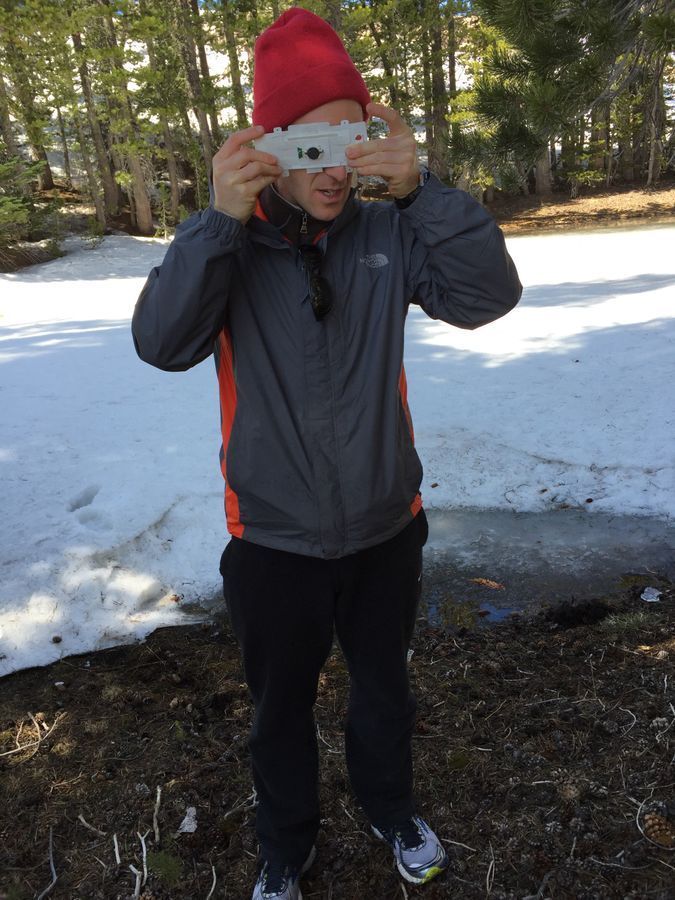
Yesterday, I went on a hike up to a mountain top in Kirkwood with my group. While avoiding all the bear caves; we saw some incredible things – specially at small scales. What was the biggest surprise for me was the existence of a pond up on the top of the mountain – Called “frog pond” because it has frogs in the summer. That was intriguing enough (since we were looking for some frozen frogs); we decided to hike up the mountain and explore the pond.
Here, I will share one surprise from the trip. We found a giant colony of black snow sprig tails; which were floating on the water. But they have a very remarkable capability. Whatch the video below (taken with an iPhone 6 at 240fps slow mo mode).
Here, I will share one surprise from the trip. We found a giant colony of black snow sprig tails; which were floating on the water. But they have a very remarkable capability. Whatch the video below (taken with an iPhone 6 at 240fps slow mo mode).
https://vine.co/v/OYUrv07mnXn
I find this remarkable for many reasons. Not only did we find this species in almost freezing conditions; the location of the pond itself makes the biodiversity of the pond quiet remarkable. It really made me think hard about how species get isolated and evolve away.
I find this remarkable for many reasons. Not only did we find this species in almost freezing conditions; the location of the pond itself makes the biodiversity of the pond quiet remarkable. It really made me think hard about how species get isolated and evolve away.
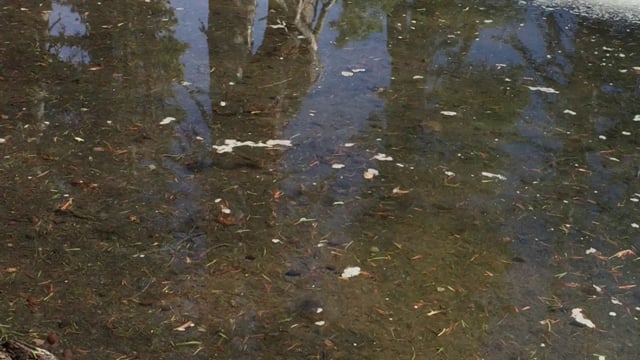
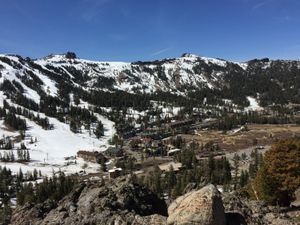
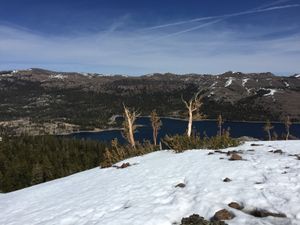
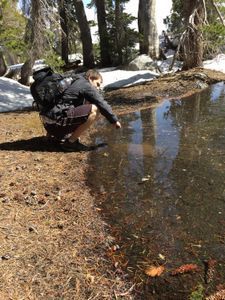
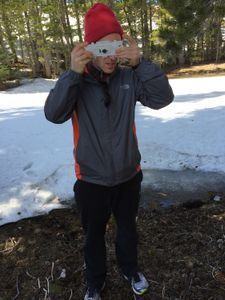
Secondly, the capability to jump on water itself is fascinating. Remember, this is a millimeter sized object and demonstrates the capacity to jump from air-water interface (see video). The smaller you get, surface tension is the dominant force. So, for a mm scale object to break free from the same is quiet remarkable. The way a sprig tail jumps is by striking a tail really hard; which results in an impact and leads to the insect to fly uncontrolled in the air. That’s what you see in the video above.
One way to analytically think about this problem is to compare the inertial forces (something that would be necessary to consider when the spring-tail) associated with the strike on the surface and compare that to surface tension force for a millimeter scale object. Another way could be to compare inertial energy with surface (tension) energy. A non-dimensional number associated with this comparison is termed Weber Number named after Moritz Weber. Weber Number is defined as
We=\rho v^2 l / \sigma
where \rho is the density of water, v is velocity, l is length scale (size of spring tail ~ 1mm) and \sigma is the surface tension of water. From this you can immediately tell that for the inertial forces to be relevant and win over surface tension, v has to be large since l is very small for a fixed surface tension and density. That’s what gets me excited – what is the actual speed at which the spring tail fires its spring.
This is an ongoing experiment that I am running; but here is where foldscope comes in. I actually imaged a spring tail inside my spring tail. I am not perfectly happy with the result as yet; but I am working on this.
One way to analytically think about this problem is to compare the inertial forces (something that would be necessary to consider when the spring-tail) associated with the strike on the surface and compare that to surface tension force for a millimeter scale object. Another way could be to compare inertial energy with surface (tension) energy. A non-dimensional number associated with this comparison is termed Weber Number named after Moritz Weber. Weber Number is defined as
We=\rho v^2 l / \sigma
where \rho is the density of water, v is velocity, l is length scale (size of spring tail ~ 1mm) and \sigma is the surface tension of water. From this you can immediately tell that for the inertial forces to be relevant and win over surface tension, v has to be large since l is very small for a fixed surface tension and density. That’s what gets me excited – what is the actual speed at which the spring tail fires its spring.
This is an ongoing experiment that I am running; but here is where foldscope comes in. I actually imaged a spring tail inside my spring tail. I am not perfectly happy with the result as yet; but I am working on this.
The spring tail itself has a surprising geometry where the long abdomen has regions of transparency and black regions. Also notice the little legs. What’s not visible her is the spring. I will take more data and figure out a way to release the spring on demand. That would be really fun to watch under a foldscope.
Cheers
Manu
Ps: This is an ongoing invetigation; please visit this back soon. Couple other mechanisms might be relevant as well. I will elaborate via editing this post further.
Cheers
Manu
Ps: This is an ongoing invetigation; please visit this back soon. Couple other mechanisms might be relevant as well. I will elaborate via editing this post further.
Sign in to commentNobody has commented yet... Share your thoughts with the author and start the discussion!

 0 Applause
0 Applause 0 Comments
0 Comments
















